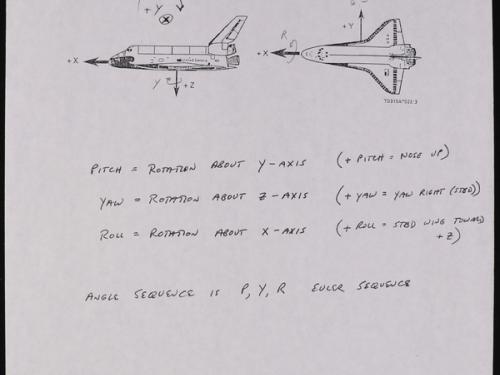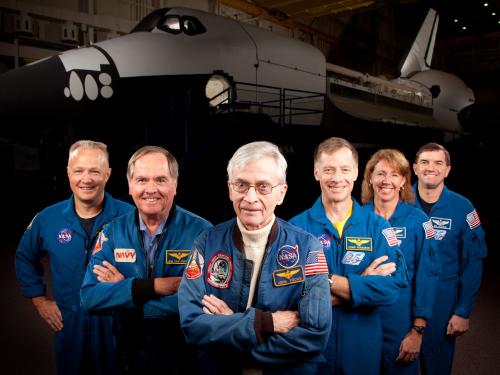
Stories of daring, stories of technological feats, stories of prevailing against the odds ... these are the stories we tell at the National Air and Space Museum. Dive in to the stories below to discover, learn, and be inspired.
Showing 21 - 30 of 78

August 12, 2022
Curator Jennier Levasseur explores how astronauts have looked down at Earth during missions ranging from Apollo to the International Space Station expeditions.

March 22, 2022
Pamela Melroy, a retired U.S. Air Force colonel, is now NASA’s deputy administrator. During her career as an Air Force pilot, Melroy logged more than 6,000 flight hours, serving in both Operation Desert Shield and Desert Storm. After NASA selected her as an astronaut candidate in 1994, she would be assigned to three space shuttle missions, and she is one of only two women to ever command a space shuttle. Melroy recently spoke about her long career in aerospace with Jennifer Levasseur, a curator in the National Air and Space Museum’s department of space history.
March 09, 2022
What's it like being the curator for one of the most iconic artifacts in the country? Reflecting on her January 2022 visit inside Space Shuttle Discovery, Jennifer Levasseur writes about her first visit as its curator, and the personal connection she shares with the Shuttle.

December 01, 2021
In the era of the Space Shuttle from the 1980s to the early 2010s, NASA astronauts would receive numerous information booklets and other written materials which would explain to them how to operate the Space Shuttle. The Museum's Archives holds two rich collections related to this intense technical training in the personal papers of Sally K. Ride and David M. Brown.

April 12, 2021
The legacy of the Space Shuttle program was to some degree built around the results of its very first mission. The reusable spaceplane, the Space Shuttle, ushered in a new era of human spaceflight 40 years ago this week with the launch of STS-1 on April 12, 1981.

March 25, 2021
Remembering the life and legacy of NASA flight director Glynn Lunney.

January 28, 2021
On January 28, 1986, Space Shuttle Challenger was set to launch on STS-51-L, on a mission to observe and track Halley’s Comet—73 seconds after launch, the shuttle disintegrated, ending the lives of all seven crew members. The disaster was most heavily felt in the space community and even in the realm of the cultural arts. Particularly, famed science fiction author Arthur C. Clarke and astronaut Sally K. Ride had their own respective responses to this tragedy.

January 28, 2021
Seventy-three seconds after launch, Challenger was destroyed on live TV. We did not understand what we saw: Our teachers could not explain it, our parents were unlikely to have better answers, and few of us probably spent time paying attention to what transpired afterwards in terms of the official investigation. The Challenger disaster symbolizes a moment in our personal and shared memories when we felt great sorrow together.

July 09, 2020
Welcome to Season 3! Today we’re talking about secret space shuttles--seriously!

April 09, 2020
The Smithsonian's Digitization Program Office takes you behind the scenes of how they captured a comprehensive 3D dataset of the largest museum artifact ever to be digitized: Space Shuttle Discovery